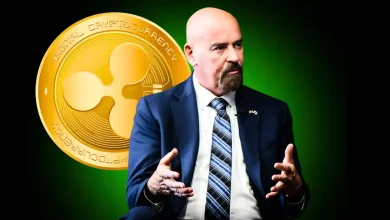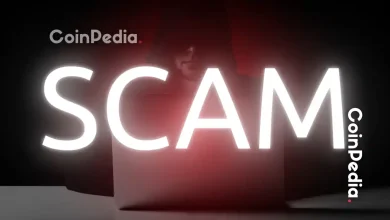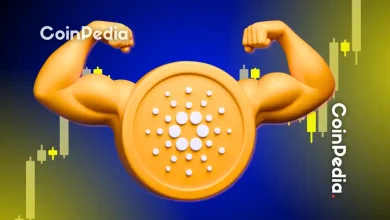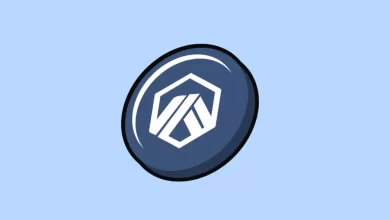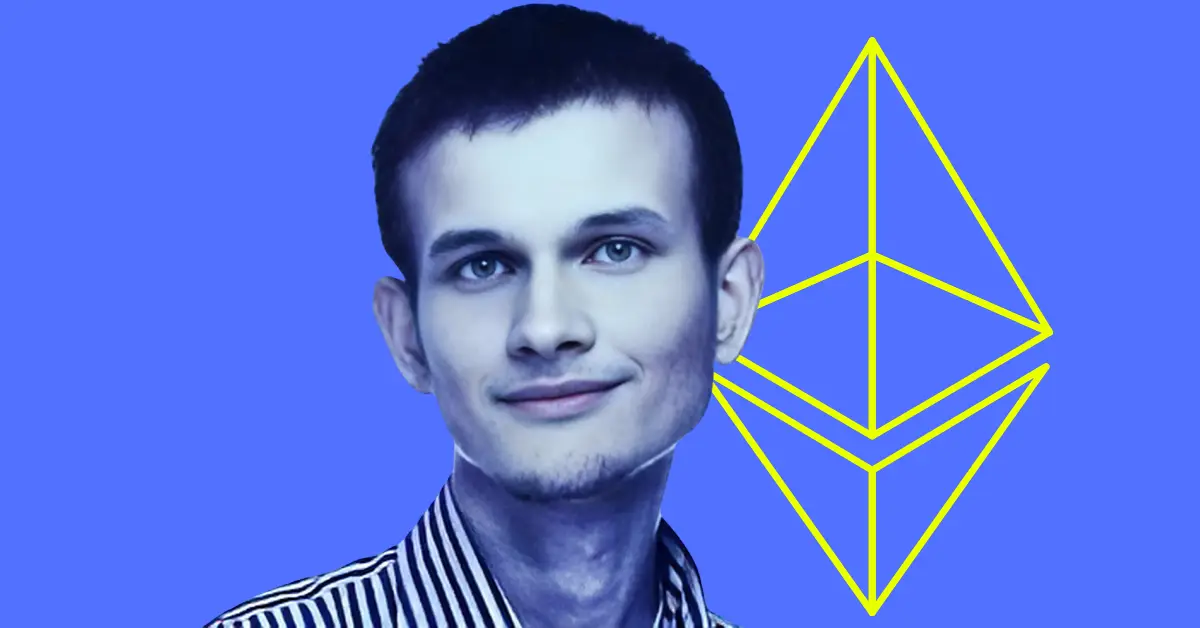
Ethereum faces scalability concerns with the rise of Layer-2 solutions.
Buterin proposed a Layer-Zero upgrade using zkVM to significantly improve Ethereum's efficiency.
This upgrade aims to address scalability and competitiveness, potentially countering criticisms about Ethereum's future.
Ethereum, one of the biggest forces in blockchain technology, is once again under the spotlight.
With growing concerns about its scalability issues, especially as more users turn to Layer-2 platforms like Arbitrum and Optimism, doubts are rising about whether Ethereum can handle the future demand.
Now, co-founder Vitalik Buterin

 Vitalik Buterin Vitalik Buterin is a well-known tech geek, influencer, and computer programmer. To promote the blockchain, he started Bitcoin Magazine and provided blockchain information for cryptocurrency investors. In 2015, he co-founded Ethereum, a blockchain platform that contributed to decentralized finance.
Quick Facts
Full name Vitaly Dmitrievich Buterin Birth 31-01-1994, Kolomna, Russia Education University of Waterloo Wife/Partner To be updated / Not Married Famous for Ethereum, ETH, Blockchain advocate/promoter Net Worth $1B (refer for real-time)
Buterin recognized the need for decentralized finance and used smart contracts to publish the Ethereum whitepaper. His contributions paved the way for Ethereum's transition to Proof-of-Stake, which proved to be scalable and effective. Furthermore, he introduced Ether (ETH), the blockchain platform's native coin.
A Timeline of Vitalik’s Career Co-founded Bitcoin Magazine (2011) – Established one of the first crypto publications, writing extensively on Bitcoin and blockchain.
Authored Ethereum Whitepaper (2013) – Proposed a blockchain with smart contract functionality for decentralized applications (d Apps).
Co-founded Ethereum (2015) – Launched Ethereum after a successful $18M ICO, revolutionizing the blockchain ecosystem.
Developed Ethereum Virtual Machine (2015–2016) – Created the EVM, enabling developers to build and deploy smart contracts.
Worked on Ethereum Scalability (2017–2021) – Contributed to Layer 2 solutions like Rollups, Plasma, and Sharding.
Led Ethereum’s Transition to Proof-of-Stake (2018–2022) – Helped develop and implement Ethereum 2.0, merging the Beacon Chain in 2022.
Blockchain Research & Cryptography (2016–Present) – Focused on zk-SNARKs, privacy tech, and decentralized governance models.
Philanthropy & Crypto Advocacy (2017–Present) – Donated millions in crypto for pandemic relief, AI research, and financial inclusion. EntrepreneurCrypto and Blockchain Expert has stepped in with a surprising new plan — and it’s stirring up major conversation. His latest move comes right after strong criticism from Cardano’s founder Charles Hoskinson
Vitalik Buterin Vitalik Buterin is a well-known tech geek, influencer, and computer programmer. To promote the blockchain, he started Bitcoin Magazine and provided blockchain information for cryptocurrency investors. In 2015, he co-founded Ethereum, a blockchain platform that contributed to decentralized finance.
Quick Facts
Full name Vitaly Dmitrievich Buterin Birth 31-01-1994, Kolomna, Russia Education University of Waterloo Wife/Partner To be updated / Not Married Famous for Ethereum, ETH, Blockchain advocate/promoter Net Worth $1B (refer for real-time)
Buterin recognized the need for decentralized finance and used smart contracts to publish the Ethereum whitepaper. His contributions paved the way for Ethereum's transition to Proof-of-Stake, which proved to be scalable and effective. Furthermore, he introduced Ether (ETH), the blockchain platform's native coin.
A Timeline of Vitalik’s Career Co-founded Bitcoin Magazine (2011) – Established one of the first crypto publications, writing extensively on Bitcoin and blockchain.
Authored Ethereum Whitepaper (2013) – Proposed a blockchain with smart contract functionality for decentralized applications (d Apps).
Co-founded Ethereum (2015) – Launched Ethereum after a successful $18M ICO, revolutionizing the blockchain ecosystem.
Developed Ethereum Virtual Machine (2015–2016) – Created the EVM, enabling developers to build and deploy smart contracts.
Worked on Ethereum Scalability (2017–2021) – Contributed to Layer 2 solutions like Rollups, Plasma, and Sharding.
Led Ethereum’s Transition to Proof-of-Stake (2018–2022) – Helped develop and implement Ethereum 2.0, merging the Beacon Chain in 2022.
Blockchain Research & Cryptography (2016–Present) – Focused on zk-SNARKs, privacy tech, and decentralized governance models.
Philanthropy & Crypto Advocacy (2017–Present) – Donated millions in crypto for pandemic relief, AI research, and financial inclusion. EntrepreneurCrypto and Blockchain Expert has stepped in with a surprising new plan — and it’s stirring up major conversation. His latest move comes right after strong criticism from Cardano’s founder Charles Hoskinson

 Charles Hoskinson Charles Hoskinson is a prominent American entrepreneur and a visionary in the blockchain spaceHe also co-founded the Ethereum blockchain platform and founder of IOHK. He developed a Module proof-of-stake(Pos) blockchain that helps Charles scale and secure enterprise blockchain adoption.
Quick Facts Full Name Charles Hoskinson Birth 05-11-1987 in Hawaii, United States Nationality American Education University of Colorado Boulder, Metropolitan State University of Denver Marital Status Unmarried as of 2025 Net Worth Estimated to be around $700 million
Experience Co-founder of Ethereum, contributing to smart contracts and Dapps in the year 2013.
Established IOHK ( Input Output Hong Kong) on the year 2014.
Developed and launched Cardano with the (PoS) model in the year 2015 to 2017.
Growth of Cardano's Web3, improving blockchain system I the year 2022.
Promoted insights about blockchain in Africa and other developing countries in the year 2023.
Promoted a digital identity control system, improving the Cardano network in the year 2024.
At present, driving innovation in blockchain DeFi and decentralized systems at IOHK. Chief Executive Officer , who believes Ethereum’s days are numbered.
Charles Hoskinson Charles Hoskinson is a prominent American entrepreneur and a visionary in the blockchain spaceHe also co-founded the Ethereum blockchain platform and founder of IOHK. He developed a Module proof-of-stake(Pos) blockchain that helps Charles scale and secure enterprise blockchain adoption.
Quick Facts Full Name Charles Hoskinson Birth 05-11-1987 in Hawaii, United States Nationality American Education University of Colorado Boulder, Metropolitan State University of Denver Marital Status Unmarried as of 2025 Net Worth Estimated to be around $700 million
Experience Co-founder of Ethereum, contributing to smart contracts and Dapps in the year 2013.
Established IOHK ( Input Output Hong Kong) on the year 2014.
Developed and launched Cardano with the (PoS) model in the year 2015 to 2017.
Growth of Cardano's Web3, improving blockchain system I the year 2022.
Promoted insights about blockchain in Africa and other developing countries in the year 2023.
Promoted a digital identity control system, improving the Cardano network in the year 2024.
At present, driving innovation in blockchain DeFi and decentralized systems at IOHK. Chief Executive Officer , who believes Ethereum’s days are numbered.
“I don’t think Ethereum will survive more than ten or fifteen years. The Layer-2s will drain all the value, and users will migrate elsewhere, eventually getting eclipsed by Bitcoin,” said Charles Hoskinson.
Vitalik Buterin, however, had no intention of letting that prediction go unchallenged.
Is Ethereum really at risk of falling behind? Or is it about to launch its most powerful upgrade yet? Let’s dive into what’s unfolding.
Vitalik Buterin’s Layer-Zero Update
In a bold move, Buterin introduced a major new upgrade plan: a Layer-Zero proposal that aims to rebuild Ethereum’s core foundation.
The proposal suggests transitioning from the current Ethereum Virtual Machine (EVM) to a far more efficient zkVM system, based on RISC-V standards.
The improvements this upgrade could bring are nothing short of dramatic:
- It would require up to 832 times fewer computational cycles than the current EVM.
- Proving cycles would be reduced by 95.7%, making transactions much faster.
- Throughput could increase by 30 times thanks to GPU acceleration.
- Proof compression would shrink from 346MB to just 1.5MB, making the blockchain far more lightweight.
If successful, these changes could significantly boost Ethereum’s efficiency, cut transaction fees, and strengthen its competitiveness in an increasingly crowded blockchain market.
Could Layer-Zero Secure Ethereum’s Future?
What makes this upgrade particularly important is that it could lessen Ethereum’s dependence on external Layer-2 solutions.
This strikes directly at the heart of Hoskinson’s criticism, offering a new path that keeps value within Ethereum’s own network.
By upgrading the base layer, Buterin’s plan could make Ethereum faster, cheaper to use, and more attractive for both developers and users, helping the network maintain its dominance even as blockchain technology keeps advancing.
Although still in the proposal phase, this upgrade is already making waves. If brought to life, it could dramatically reshape Ethereum’s future and prove that it is more resilient than its critics claim.
Ethereum’s Next Big Chapter
Vitalik Buterin’s quick and forward-thinking response shows that Ethereum is ready to evolve, not retreat.
Rather than being overshadowed by new platforms, Ethereum is preparing to reinvent itself and strengthen its leadership for the long term.
For Ethereum’s global community of users, developers, and investors, the next few years could be some of the most important in the platform’s history.
Never Miss a Beat in the Crypto World!
Stay ahead with breaking news, expert analysis, and real-time updates on the latest trends in Bitcoin, altcoins, DeFi, NFTs, and more.
FAQs
The Layer-Zero upgrade is a proposal to transition Ethereum’s base layer to a zkVM system, improving scalability and reducing transaction costs by enhancing the Ethereum Virtual Machine’s efficiency.
Hoskinson argues that Ethereum’s reliance on Layer-2 solutions will drain its value, causing users to migrate to other platforms, ultimately resulting in Ethereum being eclipsed by Bitcoin.
Layer-2 solutions operate off Ethereum’s base layer to enhance scalability, while Layer-Zero aims to improve Ethereum’s base layer itself, offering greater efficiency and reducing dependence on external solutions.




